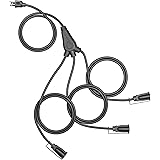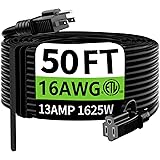The accompanying video provides a concise demonstration of how to hollow out a light bulb using common household tools. This process, while seemingly straightforward, requires meticulous attention to safety and technique to transform a discarded bulb into a versatile component for various creative projects. Mastering the art of hollowing a light bulb opens up a world of upcycling possibilities, from intricate decorative displays to miniature terrariums.
1. The Strategic Advantage of Hollowing a Light Bulb
Repurposing incandescent light bulbs offers significant creative and environmental benefits. By learning to hollow out a light bulb, enthusiasts gain access to a unique, ready-made glass vessel ideal for diverse applications. Imagine transforming everyday waste into sophisticated decor pieces or functional mini-containers.
The distinctive shape and durable glass envelope of a hollowed light bulb make it a prime candidate for DIY crafts. This technique supports sustainable practices by diverting items from landfills and promoting innovative reuse.
2. Assembling Your Expert Toolkit for Light Bulb Dissection
Achieving a clean hollowed light bulb necessitates a specific set of tools, each serving a critical function in the deconstruction process. While the video outlines the essentials, understanding their precise application enhances efficiency and safety.
- **Utility Knife or Scissors:** These are indispensable for initiating the separation of the bulb’s cap. A sharp utility knife provides greater precision for scoring and prying.
- **Flathead Screwdrivers (Two Sizes Recommended):** Larger screwdrivers are crucial for leveraging the cap off and for the initial breakage of the internal filament structure. A smaller one aids in intricate internal manipulation.
- **Nipper (Needle-Nose Pliers):** Precision nippers are vital for securely gripping and detaching the delicate black insulating material and removing any remaining shards of crystal. Their fine tips allow for careful extraction without damaging the main glass body.
- **Nylon Fabric or Old Cloth:** This acts as a containment barrier. Wrapping the bulb in nylon mitigates the risk of glass fragments scattering upon breakage and helps to dampen the forceful expulsion of inert gas.
- **Protective Gloves:** Essential for safeguarding hands from sharp glass edges and splinters. Heavy-duty work gloves or cut-resistant varieties are highly recommended.
- **Safety Glasses:** Non-negotiable eye protection. The sudden release of compressed inert gas and potential for glass shards to fly mandates robust eye shields.
3. Navigating the Core Process: Safely Hollowing a Light Bulb
The process of hollowing a light bulb involves careful, methodical steps, prioritizing safety above all. Each phase, from cap removal to filament extraction, demands a steady hand and an understanding of the bulb’s internal structure.
3.1. Understanding the Bulb’s Anatomy and Inert Gas Dynamics
Before any physical alteration, it’s crucial to grasp the internal composition of an incandescent bulb. The glass envelope encases a filament, typically tungsten, and is filled with an inert gas, commonly argon, at a pressure slightly below atmospheric. This argon gas prevents the filament from oxidizing and extends its lifespan.
When the internal seal is broken, this compressed argon gas will forcefully escape. The video rightly emphasizes this expulsion, which can scatter glass particles. This rapid depressurization is the primary reason for employing protective gear and containment measures like nylon fabric.
3.2. Step-by-Step Filament Removal and Interior Cleaning
The actual hollowing involves systematically dismantling the bulb’s base and internal components. Hold the bulb firmly by its metal base, never by the delicate glass envelope.
- **Cap Removal:** Use the utility knife or scissors to lightly press and score around the metal cap’s seam. Apply steady, gentle pressure to pry the cap away from the glass. Once a small gap appears, use the nippers to carefully peel the cap off.
- **Exposing the Insulator:** With the metal cap removed, you’ll see a black insulating material. Use the needle-nose pliers to securely grip and confine this black part, preparing for its extraction. Exercise extreme caution at this stage.
- **Internal Glass Removal:** The nippers are then used to carefully chip away the small, often brittle crystal or glass disc that seals the filament assembly. This is the critical point where the inert gas will be released. Ensure the bulb is wrapped in nylon and you are wearing all protective gear.
- **Filament Breakage:** Once the internal glass is breached and the gas has escaped, use a flathead screwdriver to carve and break apart the remaining filament structure. Work slowly and methodically, ensuring all internal components are detached and removed.
- **Expelling Argon Gas:** The forceful carving action, especially when breaking the filament’s support structure, will facilitate the complete release of any residual argon gas. Continue to work cautiously until all internal elements are thoroughly fragmented.
4. Beyond the Basics: Advanced Cleaning and Finishing Techniques
Once the internal components are removed, the hollowed light bulb requires thorough cleaning to prepare it for its new purpose. Different types of bulbs may require varied cleaning approaches.
- **Standard Cleaning:** For clear bulbs, a simple rinse with water is often sufficient to remove loose glass dust and debris. Use a small brush if necessary to reach intricate areas inside.
- **Opaque Bulb Treatment:** Opaque or frosted bulbs present a unique challenge due to their internal coating. The video suggests a highly effective method: using hot salt. Fill the bulb with a mixture of hot water and coarse salt. The abrasive action of the salt, combined with vigorous shaking, will scour the internal frosting, gradually rendering the bulb transparent. Repeat this process until the desired clarity is achieved, then rinse thoroughly.
- **Drying and Polishing:** After cleaning, ensure the bulb is completely dry. Air drying is usually sufficient, but for quicker results, a gentle blast of compressed air can be used. For a professional finish, consider lightly polishing the exterior glass with a microfibre cloth to remove fingerprints and smudges.
5. Creative Applications for Your Hollowed Light Bulbs
With a clean, hollowed light bulb in hand, the possibilities for creative expression are virtually limitless. These repurposed vessels can add a unique touch to almost any setting or project.
- **Decorative Ornaments:** Imagine miniature winter scenes enclosed within the bulb, complete with tiny figurines and faux snow for Christmas tree decorations. For window displays, consider filling them with colorful beads, glitter, or small dried flowers, catching the light beautifully.
- **Miniature Flower Vases:** A hollowed light bulb can serve as an exquisite, delicate vase for a single bloom or a small sprig of greenery. These make charming table centerpieces or elegant hanging decor when suspended with fine wire or string.
- **Aquatic Bottles/Terrariums:** Create fascinating micro-environments. Picture a tiny aquatic bottle housing small water plants and perhaps even a microscopic organism, transforming it into a self-contained ecosystem. Alternatively, for a terrestrial version, add layers of sand, small pebbles, and air plants to construct a unique mini-terrarium.
- **Scientific Curiosities:** For educators or enthusiasts, a hollowed light bulb can become a demonstrative tool. Use it to display different mineral samples, fine sand from various locations, or even a small pendulum for physics experiments.
- **Unique Gift Packaging:** Conceal small, precious gifts like rings, special notes, or tiny keepsakes within the glass bulb. The act of revealing the gift from such an unconventional container adds an element of surprise and delight.
Hollowing a light bulb is a rewarding DIY endeavor that combines practical skills with creative vision. Remember, safety is paramount throughout this process, particularly when dealing with the potential for glass breakage and the release of inert gas.










